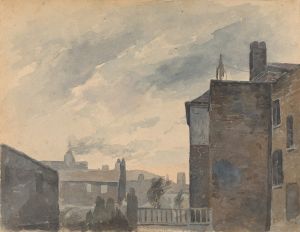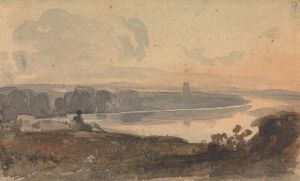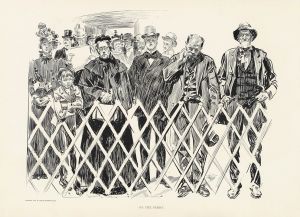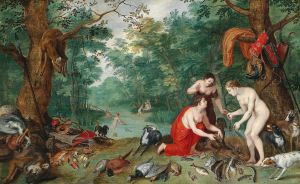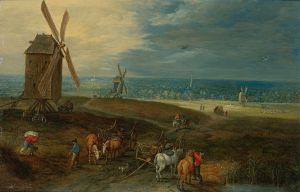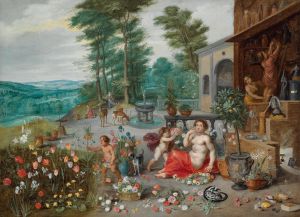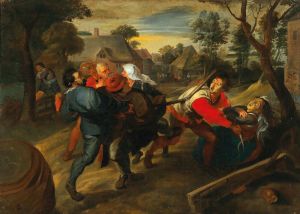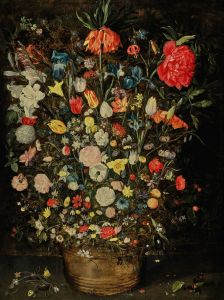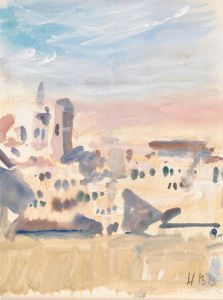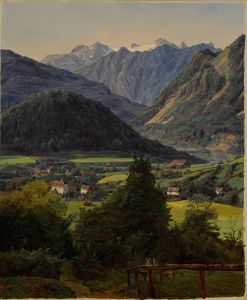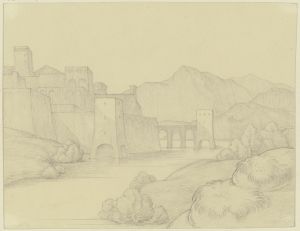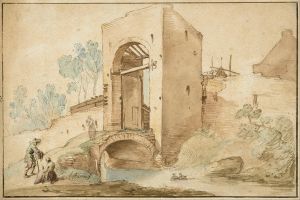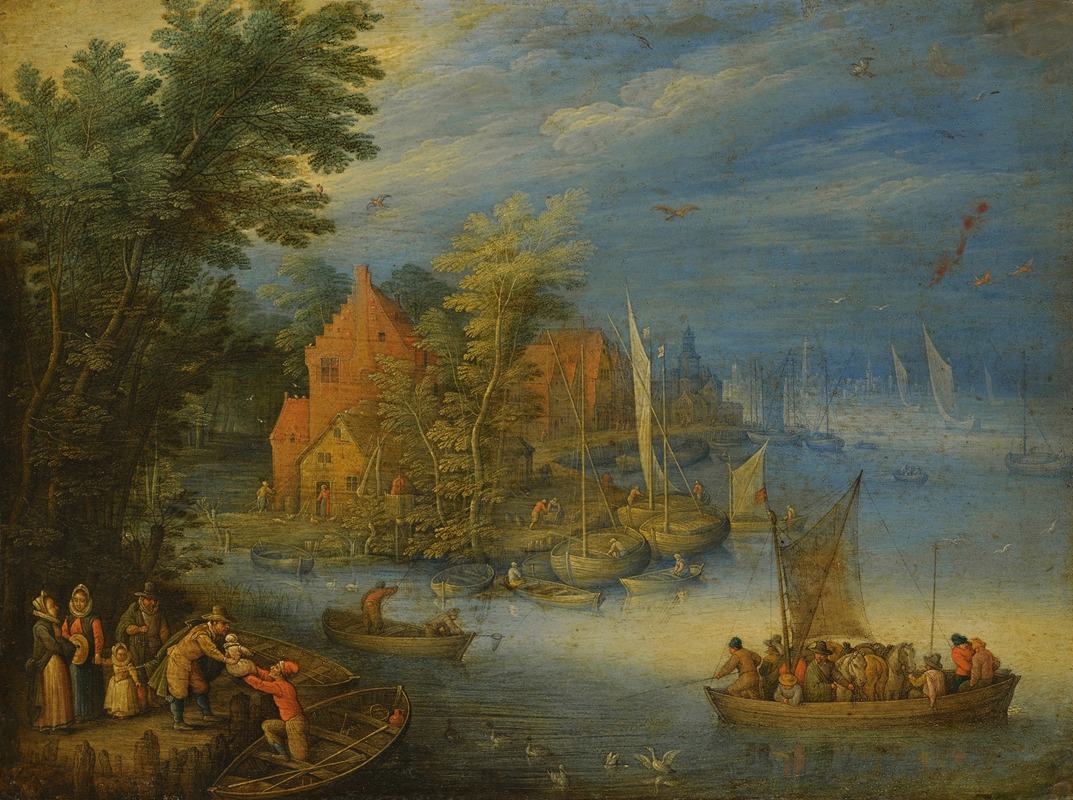
A Town On The Banks Of A Wide River With A Heavily Laden Ferry Approaching The Shore In The Forgeound
A hand-painted replica of Jan Brueghel the Younger’s masterpiece A Town On The Banks Of A Wide River With A Heavily Laden Ferry Approaching The Shore In The Forgeound, meticulously crafted by professional artists to capture the true essence of the original. Each piece is created with museum-quality canvas and rare mineral pigments, carefully painted by experienced artists with delicate brushstrokes and rich, layered colors to perfectly recreate the texture of the original artwork. Unlike machine-printed reproductions, this hand-painted version brings the painting to life, infused with the artist’s emotions and skill in every stroke. Whether for personal collection or home decoration, it instantly elevates the artistic atmosphere of any space.
Jan Brueghel the Younger, a prominent Flemish Baroque painter, is known for his detailed landscapes and vibrant compositions. He was born in 1601 in Antwerp, into a family of artists. His father, Jan Brueghel the Elder, was a renowned painter, and his grandfather, Pieter Bruegel the Elder, was one of the most significant artists of the Northern Renaissance. Jan Brueghel the Younger continued the family tradition, often collaborating with other artists and producing works that were highly sought after in his time.
"A Town On The Banks Of A Wide River With A Heavily Laden Ferry Approaching The Shore In The Foreground" is one of his notable works. This painting exemplifies Brueghel's skill in capturing the essence of Flemish landscapes and daily life. The scene is set on the banks of a wide river, where a bustling town is depicted in the background. The town is characterized by its typical Flemish architecture, with buildings that suggest a prosperous community engaged in trade and commerce.
In the foreground, the painting features a heavily laden ferry approaching the shore. This element of the composition highlights the importance of river transport during the 17th century, a time when waterways were crucial for the movement of goods and people. The ferry is depicted with meticulous attention to detail, showcasing Brueghel's ability to render complex scenes with clarity and precision. The figures on the ferry and along the riverbank are engaged in various activities, adding a lively and dynamic quality to the painting.
Brueghel's use of color and light in this work is particularly noteworthy. The palette is rich and varied, with blues and greens dominating the river and landscape, while the town and figures are rendered in warmer tones. The play of light across the scene creates a sense of depth and atmosphere, drawing the viewer into the world Brueghel has depicted. His technique reflects the influence of his father and other contemporaries, yet it also demonstrates his unique ability to blend detail with a harmonious composition.
The painting is a testament to Brueghel's mastery of landscape painting and his keen observation of the world around him. It captures a moment in time, offering insights into the daily life and environment of 17th-century Flanders. While Brueghel the Younger may not have achieved the same level of fame as his grandfather, his works remain an important part of the Baroque period's artistic legacy.
Today, Jan Brueghel the Younger's paintings are held in various collections around the world, appreciated for their historical significance and artistic merit. "A Town On The Banks Of A Wide River With A Heavily Laden Ferry Approaching The Shore In The Foreground" continues to be admired for its intricate detail and vibrant depiction of a bygone era.





